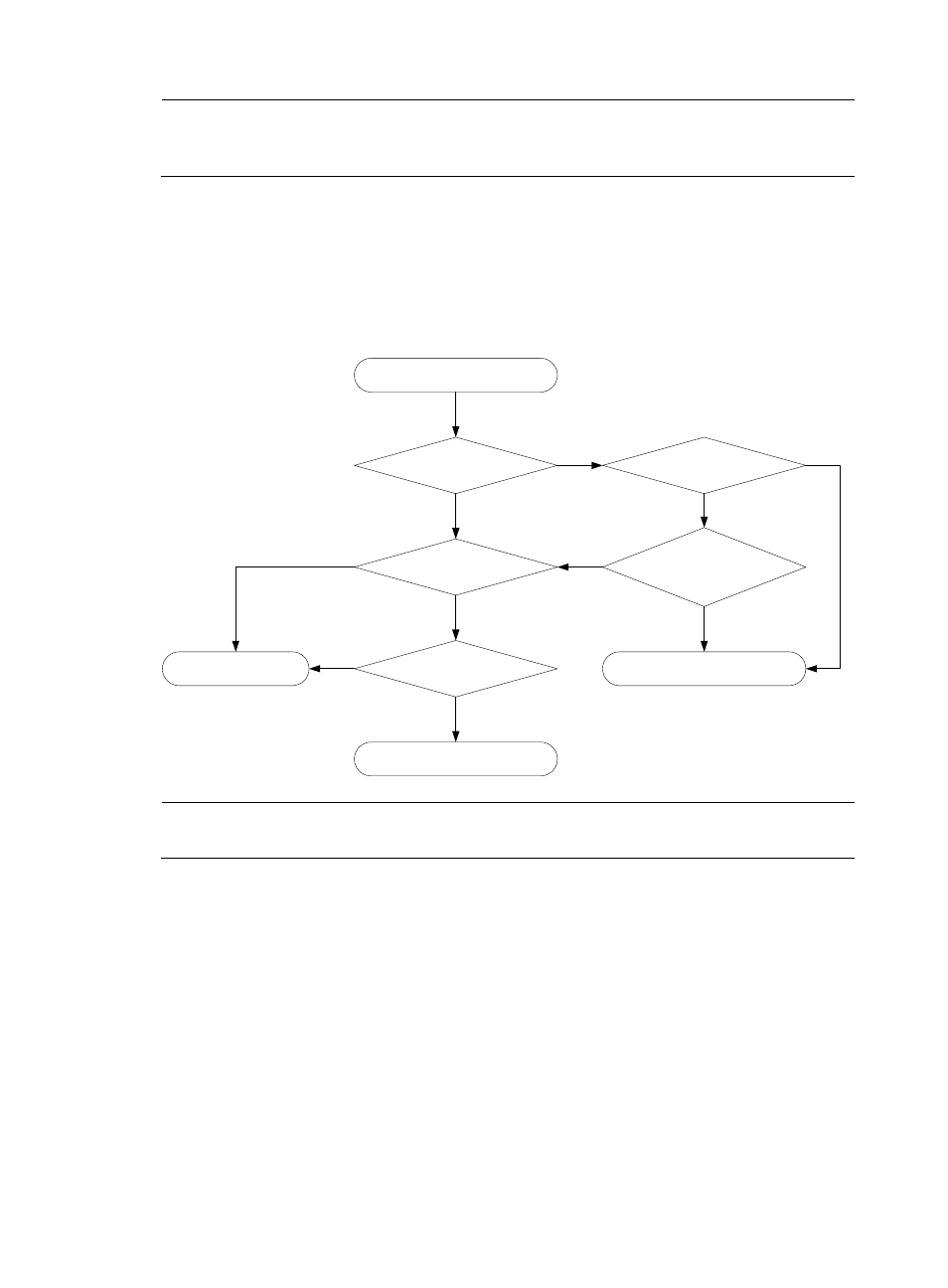Relationships among ipv6 pim protocols, Protocols and standards – H3C Technologies H3C S10500 Series Switches User Manual
Page 386

371
NOTE:
In IPv6 PIM-SSM, the term
channel refers to an IPv6 multicast group, and the term channel subscription
refers to a join message.
Relationships among IPv6 PIM protocols
In an IPv6 PIM network, IPv6 PIM-DM cannot work with IPv6 PIM-SM, IPv6 BIDIR-PIM, or IPv6 PIM-SSM.
However, IPv6 PIM-SM, IPv6 BIDIR-PIM, and IPv6 PIM-SSM can work together. When they work together,
which one is chosen for a receiver trying to join a group depends, as shown in
.
Figure 104 Relationships among IPv6 PIM protocols
A receiver joins IPv6 multicast
group G
G is in the IPv6 SSM
group range
Use IPv6 BIDIR-PIM for G
IPv6 BIDIR-PIM is used?
G has corresponding IPv6
BIDIR-PIM RP?
Use IPv6 PIM-SSM for G
An MLD SSM mapping is
configured for G?
Use IPv6 PIM-SM for G
The receiver specifies an
IPv6 multicast source?
No
No
No
No
No
Yes
Yes
Yes
Yes
Yes
NOTE:
For more information about MLD SSM mapping, see the chapter “MLD configuration.”
Protocols and standards
•
RFC 3973, Protocol Independent Multicast-Dense Mode(PIM-DM):Protocol Specification(Revised)
•
RFC 4601, Protocol Independent Multicast-Sparse Mode (PIM-SM): Protocol Specification (Revised)
•
RFC 3956, Embedding the Rendezvous Point (RP) Address in an IPv6 Multicast Address
•
RFC 5015, Bidirectional Protocol Independent Multicast (BIDIR-PIM)
•
RFC 5059, Bootstrap Router (BSR) Mechanism for Protocol Independent Multicast (PIM)
•
RFC 4607, Source-Specific Multicast for IP
•
draft-ietf-ssm-overview-05, An Overview of Source-Specific Multicast (SSM)